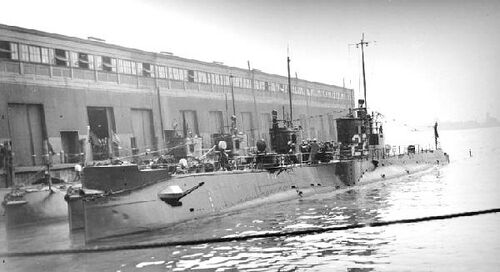S-22

Photo courtesy of the Milne Special Collections, University of New Hampshire Library, Durham, N.H.

Photo courtesy of the Milne Special Collections, University of New Hampshire Library, Durham, N.H.

Photo courtesy of the Milne Special Collections, University of New Hampshire Library, Durham, N.H.

The towed gunnery target can be seen just below the horizon as four white dots, with a shell splash just to the left.
From an original photo negative in the private collection of Ric Hedman.

Photo in the private collection of Ric Hedman.

Photo in the private collection of Ric Hedman

Officers, seated in front center, are (left-to-right):
Lieutenant Joseph F. Enright, USN;
Lieutenant Commander George H. Wales, USN, Commanding Officer;
Lieutenant Ernest S. Friedrick, USN;
Ensign Alvin E. Kirstein, USNR.
Harold Lintner, Chief Radioman, just to the left of the two African American Stewards Mates.
Joe Enright would later command the USS Archerfish (SS-311) during WWII. In November, 1944 he directed a well-planned and aggressive attack on the Japanese aircraft carrier Shinano, receiving credit for sinking the largest ship ever sunk by a submarine.
Photo NH 90515 courtesy of NHHC
Page created by:
Ric Hedman & David Johnston
1999 - 2023 - PigBoats.COM©
Mountlake Terrace, WA, Norfolk, VA
webmaster at pigboats dot com
